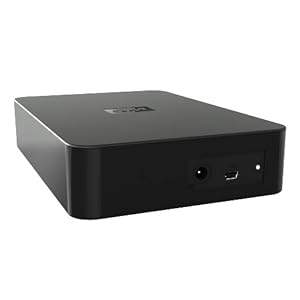Best Workflow For Avchd Video Footage - turn With Nero vision - Editing With Sony Vegas
I'm the "Web guy" at a small business, so, basically, anyone conveyable via the Internet becomes an entry on my to-do list. Earlier this year, the owner came to me, requesting testimonials for the website--video testimonials. And not just regular, old thorough videos, but high-definition ones; and he wanted them "eh-sap." So off I marched to Best Buy with the boss's enterprise card to pick up one of those newfangled, high-def shooting camcorders, the type that'll show sweat dripping over pimples on people's faces in lively detail. "So this top-of-the-line Sony shoots in Hd? And it picks up sweat drops and skin imperfections? Okay, I'll take it."
Little did I know that Sony's high-definition format is Avchd, its m2ts files nearly impossible to work with natively, including in Sony's own pro editing software, Vegas. Makes exquisite sense, right? What I figured out over the next join weeks of fervent, headache-inducing quest machine study and personal experimentation was a workflow for editing Avchd, while maintaining the Hd resolution. Let me help you avoid the pain: the following is my workflow in three easy-to-digest steps, including how I converted the footage with Nero 8 software, specifically with its foresight video editing tool.
Step 1: Shooting with Camcorder
I capture video with a Sony Hdr-Xr500V camcorder, the one I purchased from Best Buy on the boss man's black card--listed for 00, but over 00 at the register (thank you very much, 10.25% Chicago sales tax). Resolution is 1920x1080, shooting in 60i. Its 120Gb hard disk drive allows for extended recording sessions and a fully digital workflow, which I wanted after dealing with a Canon Hv20 and the mess of its MiniDv tapes. I exchange the footage through the in case,granted Mini Plug to Usb 2.0 cable, importing it with the also bundled Pmb software.
Step 2: Converting with Nero
With the m2ts files stored on my 1Tb Western Digital external hard drive--the files swiftly ate up all the internal storage on my gimpy, two year-old laptop--I open up Nero 8 for the conversion. In Vision, Nero's editing application, I generate a new movie task and import the files there. I make some very basic, inevitable trims, so as not to unnecessarily lengthen the conversion process, and then click to export. Using the drop-down menus, I select Mpeg-2 as the format and custom as the profile, clicking on the configure button to customize the settings: Ntsc; 16:9 ratio; 1920x1088; 2-Pass Vbr encoding. Lastly, I press export, after having excellent the thorough file portfolio on my external drive.
Step 3: Editing with Sony Vegas
I import the footage, now usable mpg files, into Sony Vegas Pro (version 8.0a, for me). As I learned from my quest machine research, the template needs to be modified to yield high-definition, through the File, Properties menu selection: my default template is now Hd 1080-60i (1920x1080, 29.970 fps). With the template set, I get right to editing my testimonial footage, making sure the client's mild case of adult acne is artfully framed and transitioned to and from. Once finished, I output: Render As from the menu, choosing from the drop-down Windows Media Video V9 (*.wmv)/8 mbps Hd 1080-30p Video. About an hour and a half later (thank you very much, outdated laptop), my three-minute testimonial is ready for prime time on the website.
Well, approximately ready. I upload the closed wmv file to my YouTube account; after it's initially processed, the Hd version takes a dinky longer. Once available, I grab the embed code (after clicking the Play in Hd selection through the customize drop-down) and add it to the website, so visitors can see not a nice-sounding quotation, but a high-definition talking head--warts and all.
Friends Link : Buy Shopping Discount 58mm 045x SUPER WIDE Canon Kinetic GlassLock Xtreamer WiFi Adapter

No comments:
Post a Comment